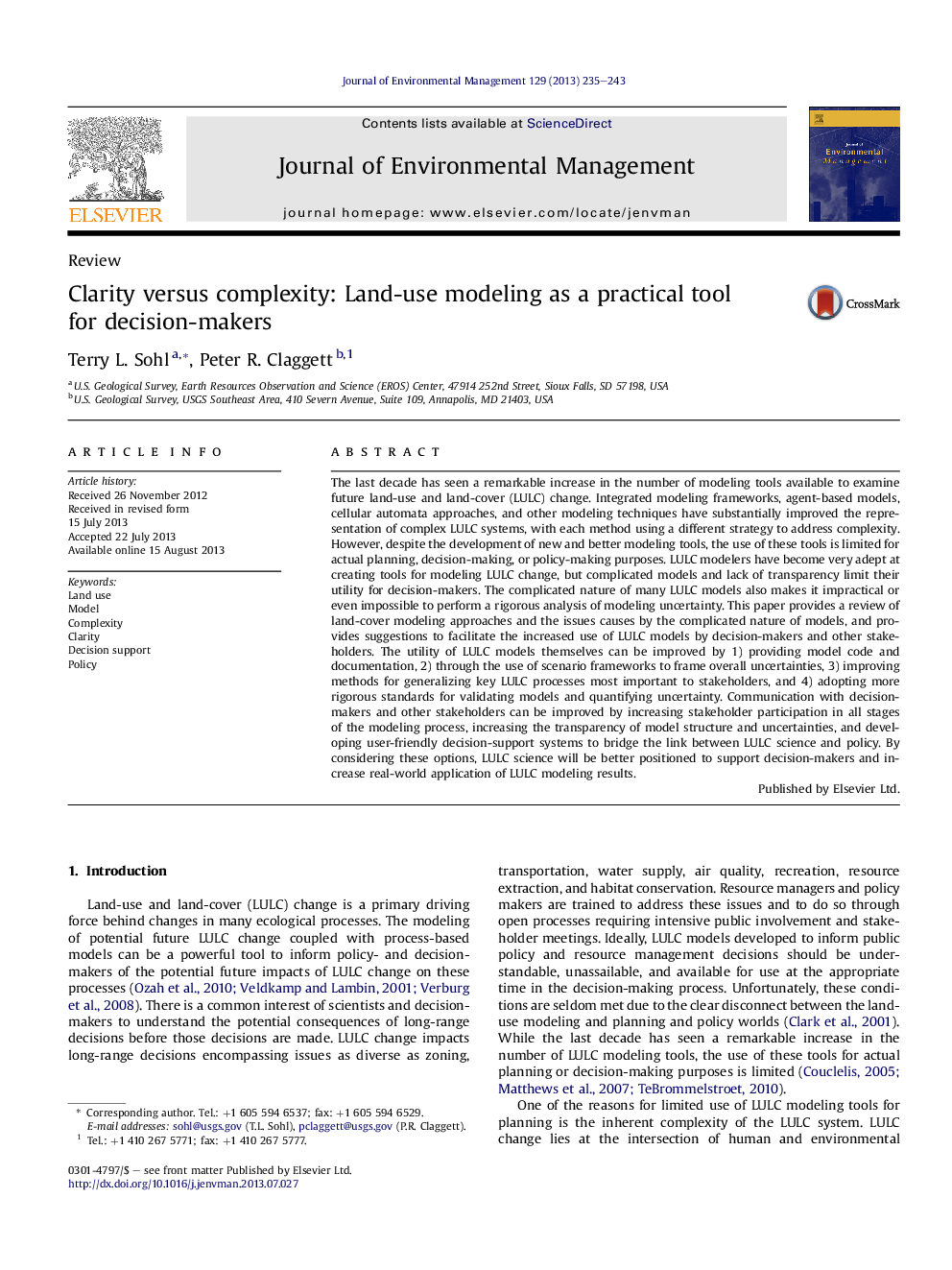| Article ID | Journal | Published Year | Pages | File Type |
|---|---|---|---|---|
| 1056165 | Journal of Environmental Management | 2013 | 9 Pages |
•Many new land-use and land-cover models have been developed in the last decade.•Very few models are being used for actual planning or decision-making purposes.•The complicated nature of many land-use models and uncertainty limit their utility.•Modelers should improve uncertainty characterization and generalization methods.•Interaction with stakeholders should include improved transparency and participation.
The last decade has seen a remarkable increase in the number of modeling tools available to examine future land-use and land-cover (LULC) change. Integrated modeling frameworks, agent-based models, cellular automata approaches, and other modeling techniques have substantially improved the representation of complex LULC systems, with each method using a different strategy to address complexity. However, despite the development of new and better modeling tools, the use of these tools is limited for actual planning, decision-making, or policy-making purposes. LULC modelers have become very adept at creating tools for modeling LULC change, but complicated models and lack of transparency limit their utility for decision-makers. The complicated nature of many LULC models also makes it impractical or even impossible to perform a rigorous analysis of modeling uncertainty. This paper provides a review of land-cover modeling approaches and the issues causes by the complicated nature of models, and provides suggestions to facilitate the increased use of LULC models by decision-makers and other stakeholders. The utility of LULC models themselves can be improved by 1) providing model code and documentation, 2) through the use of scenario frameworks to frame overall uncertainties, 3) improving methods for generalizing key LULC processes most important to stakeholders, and 4) adopting more rigorous standards for validating models and quantifying uncertainty. Communication with decision-makers and other stakeholders can be improved by increasing stakeholder participation in all stages of the modeling process, increasing the transparency of model structure and uncertainties, and developing user-friendly decision-support systems to bridge the link between LULC science and policy. By considering these options, LULC science will be better positioned to support decision-makers and increase real-world application of LULC modeling results.
